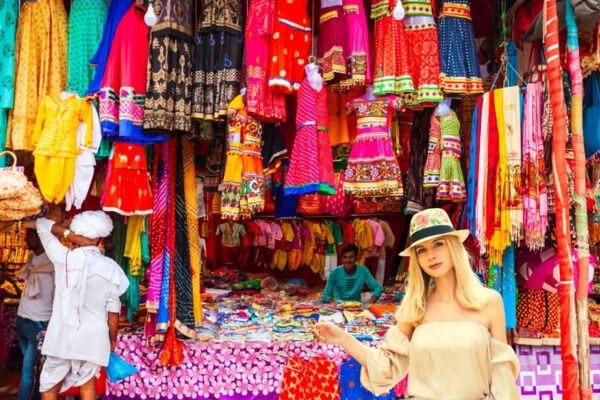

Streetwear and Luxury Fashion: The Dynamic Evolution of Fine Arts-Inspired Menswear
Streetwear, once a niche subculture, has transformed into one of the most influential forces in global fashion. Over the past few decades, it has shifted from humble, urban beginnings to a mainstream cultural powerhouse, often seen on runways and in luxury boutiques. This evolution has sparked a deeper fusion with luxury fashion brands, resulting in the emergence of fine arts collection clothing brands. These brands have blurred the lines between streetwear, art, and luxury menswear, giving birth to a new era of creative expression in fashion.

In this article, we will explore how streetwear has evolved, its symbiotic relationship with luxury clothing brands, the rise of fine arts collection clothing brands, and how mens luxury clothing is influencing the future of fashion. We will also dive into the ongoing transformation of fashion culture, where exclusivity and artistry meet the urban spirit of streetwear.
The Roots of Streetwear: From the Streets to the Runway
Streetwear has its roots deeply embedded in urban culture, particularly in cities like Los Angeles and New York, where the influences of skateboarding, hip-hop, and graffiti came together to form a distinctive style. In the 1980s, brands like Stüssy and Supreme introduced graphic tees, hoodies, and sneakers as a form of self-expression, catering to the youthful rebellion and individuality of subcultures that rejected mainstream fashion.
The 1990s saw the rise of streetwear in hip-hop culture, with artists like Run-D.M.C., LL Cool J, and Nas wearing tracksuits, oversized jackets, and signature sneakers. These artists popularized brands such as Adidas, Nike, and FUBU, establishing streetwear as a status symbol for urban youth. The culture was further amplified by the increasing popularity of skateboarding, with brands like Thrasher and Vans solidifying their place in streetwear fashion. This era marked the beginning of the global recognition of streetwear, which was no longer confined to the youth of specific cities but began to resonate with a worldwide audience.
As streetwear brands expanded their reach, they developed an ethos of exclusivity, often releasing limited edition items or collaborating with artists, musicians, and designers. The scarcity and hype surrounding these drops—what is now known as “drop culture”—created a sense of urgency, further elevating the status of streetwear. Supreme, for example, became a cultural icon not just because of its designs but because of its scarcity, driving high demand and long lines at its flagship stores.
The Intersection of Streetwear and Luxury: A Bold New Era
The fusion of streetwear with high fashion took off in the 2010s, signaling a new chapter in both industries. Luxury clothing brands, traditionally associated with elite status and formal elegance, began to recognize the cultural capital of streetwear. Collaborations between streetwear brands and luxury houses were not just a marketing tactic; they reflected a larger shift in the fashion industry’s values and aesthetic preferences.
One of the most notable moments in this evolution was the 2017 collaboration between Supreme and Louis Vuitton. Supreme, a streetwear brand that was once associated with underground youth culture, partnered with Louis Vuitton, a name synonymous with luxury and exclusivity. The collaboration was a game-changer, showcasing how streetwear could infiltrate the high-fashion world. It marked the beginning of a new era where fashion could be both rebellious and refined.
Louis Vuitton’s decision to embrace streetwear came under the direction of Virgil Abloh, a designer whose Off-White label blends street culture with high fashion. Abloh, who served as the artistic director of Louis Vuitton’s men’s collection, brought a fresh, youthful perspective to the brand, incorporating oversized silhouettes, graphic-heavy designs, and sneakers—key elements of streetwear. This marked a departure from the classic luxury aesthetics of Louis Vuitton’s previous designs and opened the door for other luxury brands to explore the world of streetwear.
Streetwear and Luxury
Balenciaga, under the leadership of Demna Gvasalia, became another key player in the streetwear-luxury fusion. The brand became synonymous with chunky sneakers, oversized hoodies, and logo-centric designs. Gvasalia’s approach to design has made streetwear elements like distressed denim, oversized outerwear, and bold logos integral parts of Balenciaga’s collections. Other luxury brands, such as Gucci, Prada, and Givenchy, followed suit, integrating streetwear elements into their own lines, thereby redefining what constitutes luxury fashion in the 21st century.
The crossover between streetwear and luxury fashion is not just about aesthetics. It’s about cultural relevance and shifting consumer demands. The modern luxury consumer is no longer simply seeking exclusivity; they want fashion that speaks to their identity, their lifestyle, and their values. Streetwear, with its emphasis on authenticity, individuality, and self-expression, became the perfect match for the luxury market, which sought to engage a younger, more diverse audience.
The Rise of Fine Arts Collection Clothing Brands
The latest evolution in streetwear has been the emergence of fine arts collection clothing brands. These brands merge streetwear and contemporary art, creating garments that are as much about the visual art as they are about fashion. This fusion has introduced an entirely new level of sophistication and artistic value to the world of streetwear, giving rise to wearable pieces that act as both fashion statements and pieces of art.
One of the most significant players in this space is Virgil Abloh’s Off-White. Abloh, who has a background in both fashion and art, has used his label as a platform to integrate art and street culture. His designs often incorporate striking graphics, industrial motifs, and references to modern art. Off-White’s collaborations with artists like Takashi Murakami and Jean-Michel Basquiat have solidified its place as a fine arts collection clothing brand. These collections blend luxury materials with high-concept art, producing clothing that is both avant-garde and highly wearable.
Takashi Murakami, a Japanese artist known for his bright, playful aesthetic, has also crossed over into fashion. His collaboration with Louis Vuitton transformed the luxury brand’s designs with Murakami’s signature smiling flowers and vibrant colors. The collaboration brought together fine art and luxury fashion, creating a visual language that appealed to both art lovers and fashion enthusiasts. Louis Vuitton’s embrace of Murakami’s art in its collections reflects the broader trend of streetwear-inspired fine arts collaborations, bringing art into the realm of high fashion in a way that was previously unimagined.
Arts Collection Clothing Brands
Another fine arts streetwear brand that has emerged is Shepard Fairey’s OBEY. Fairey, a renowned street artist known for his iconic “Hope” poster of Barack Obama, uses OBEY as a platform to merge his art with street fashion. His brand’s collaborations with various artists and designers have produced limited-edition collections that offer both visual art and fashion in a unique package. OBEY is a perfect example of how streetwear brands are turning into fine arts collection clothing brands, blurring the lines between fashion, politics, and art.
The growing popularity of fine arts-inspired streetwear brands is changing how we think about clothing. No longer just a functional item, fashion is increasingly being recognized as a form of self-expression and cultural commentary. Wearers of these art-infused garments are not just showcasing their style; they are showcasing their taste in art, culture, and contemporary issues. These collections appeal to a new generation of fashion consumers who are interested in more than just the label—they are interested in the narrative and cultural significance behind the design.
Mens Luxury Clothing and the Streetwear Influence
As streetwear continues to evolve, mens luxury clothing is increasingly influenced by street culture. Menswear, traditionally defined by tailored suits and formal attire, is now embracing the casual cool of streetwear. Luxury brands like Gucci, Prada, and Dior have incorporated oversized garments, bold logos, and athletic-inspired footwear into their collections. These designs maintain the craftsmanship and quality of luxury fashion but add a more relaxed, urban edge.
The incorporation of streetwear elements into mens luxury clothing is not just about aesthetic choices; it is also a reflection of the broader cultural shifts in fashion. Men today are no longer restricted by traditional notions of what constitutes “formal” attire. Instead, they seek a more fluid approach to luxury fashion, blending elements of casual streetwear with the prestige and sophistication of luxury clothing.
The Streetwear Influence
Dior’s collaboration with streetwear designer Kim Jones is a prime example of how streetwear is influencing mens luxury fashion. Jones, who worked at Louis Vuitton before joining Dior, introduced a new direction for Dior Men’s collections, blending street style with the traditional elegance of the brand. His use of oversized silhouettes, street-inspired accessories, and graphic prints elevated the menswear line, making it relevant to a younger audience while staying true to the brand’s luxurious heritage.
The rise of sneaker culture has also played a significant role in the evolution of mens luxury clothing. Sneakers, once relegated to athletic wear, have become a luxury status symbol, with brands like Balenciaga, Gucci, and Louis Vuitton producing high-end sneakers that blend streetwear aesthetics with premium materials. This shift has blurred the line between formal and casual footwear, making sneakers a must-have in any modern menswear wardrobe.
The Future of Streetwear and Luxury Fashion
The future of streetwear in luxury fashion looks incredibly promising. As more luxury brands continue to embrace street culture, the fusion of high-end fashion and streetwear will become increasingly commonplace. We can expect to see more collaborations between fine artists and fashion designers, producing collections that celebrate both artistry and fashion. These collaborations will continue to drive the conversation around cultural relevance, self-expression, and creativity in the fashion world.
Mens luxury clothing will also continue to evolve as the demand for more casual, comfortable, and expressive clothing grows. The future of menswear lies in a balance between luxury craftsmanship and streetwear’s laid-back, inclusive approach to fashion. As these two worlds continue to converge, we can expect to see even more hybrid collections that challenge traditional definitions of luxury and reshape the fashion industry.
Conclusion
Streetwear has come a long way from its roots in skateboarding and hip-hop culture. Today, it stands as a dominant force in global fashion, influencing both luxury brands and fine arts collection clothing labels. The convergence of streetwear and luxury fashion is not just about aesthetics but about cultural relevance and artistic expression. With the rise of fine arts-inspired clothing brands and the continued influence of streetwear on mens luxury clothing, the future of fashion is poised to be a dynamic, inclusive, and creatively charged space where art, fashion, and culture collide.
















